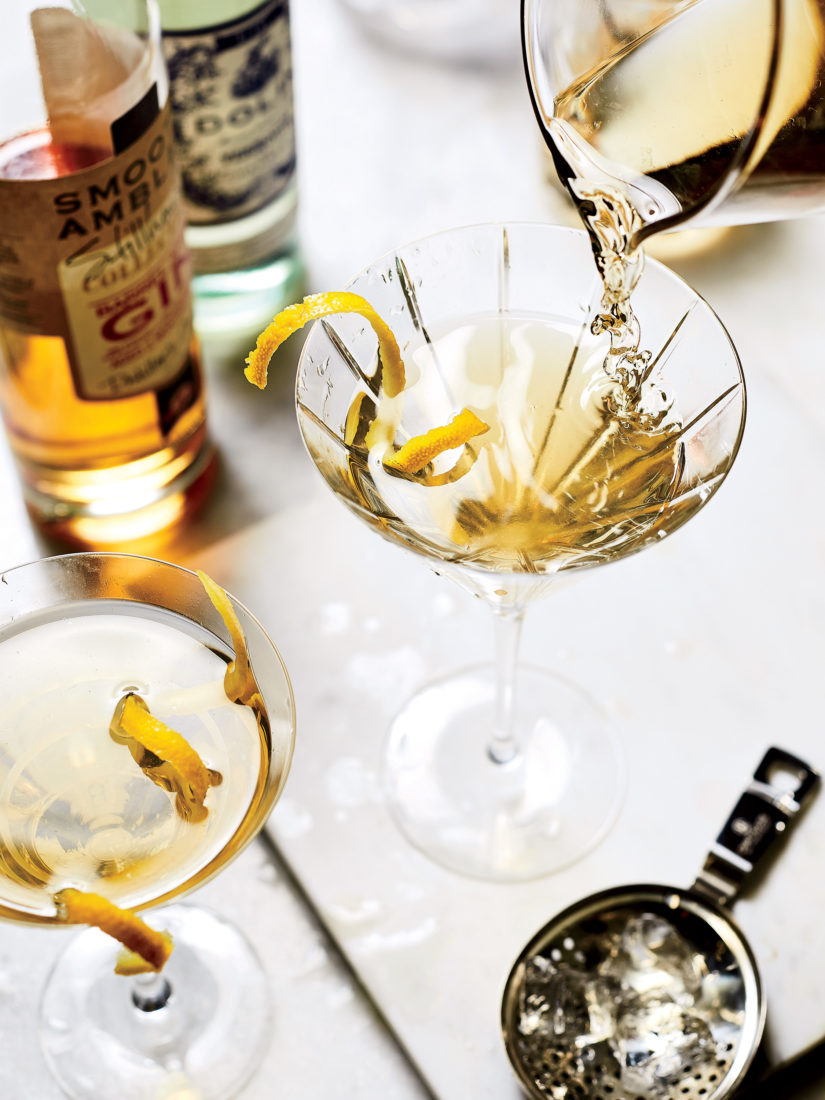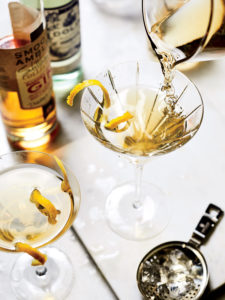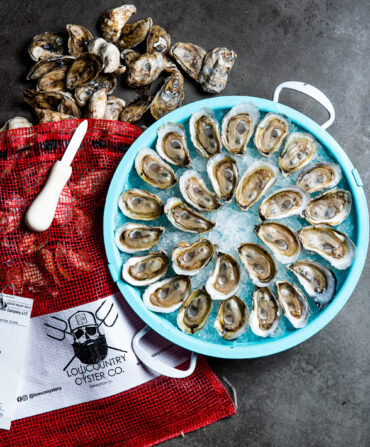Gin is the quintessential spirit of Northern climes—that juniper scent brings to mind granite ledges and scrubby Alpine forests. But at least one Virginia distiller has figured out a way to lure it south.
For the Pearousia Barrel Old Tom Watershed Gin—a third limited bottling of which was released this past spring—Purcellville’s Catoctin Creek ages its acclaimed Watershed Gin, distilled from organic rye and wheat, for four months in barrels freshly emptied of pear brandy, that classic Southern spirit. The result’s dense floral aroma filigreed with toasty oak convincingly changes the geography of gin.
Chad Robinson, Catoctin’s brand ambassador, first pitched the idea to his bosses. He figured the juniper and cinnamon of the gin would blend well with the comforting taste of ripe pear, and they do. The spirit “makes a great gin old-fashioned,” he says.
Staid old gin has become an unexpectedly exciting class of spirits of late, in part thanks to a rising tide of craft distilleries spreading across the South and beyond. The liquor lends itself to customization—it mostly just has to maintain some juniper essence to qualify as gin—and distillers love tinkering with local botanicals, adding terroir, and messing around with methods of macerating and steam-infusing.
Yet the grandest and least-heralded version may be barrel-aged gins like Catoctin Creek’s. After some months in the barrel, gin can emerge like a forgotten but wiser cousin, yielding unexpected notes such as a touch of butterscotch or a distant char that round out any curative tinge. Most barrel-aged gins also tend to take on a pale straw hue, a change that quietly says, “How do you do? I don’t believe we’ve met.”
Federal regulators, however, don’t allow gin to be labeled as barrel-aged—they define the distilled spirit as one that derives its main flavor from juniper berries, and rules forbid using words that denote age. But that decree overlooks the fact that most spirits once traveled here in barrels, and everything picked up hints of oak, desired or not. Despite the legal hobbling, craft distillers have been happy to experiment (often labeling the results “barrel-rested” instead), and a number of quality barreled gins have been released by Southern distillers, including High Wire in Charleston, South Carolina; Corsair in Nashville; Treaty Oak in Dripping Springs, Texas; and Smooth Ambler Spirits in Maxwelton, West Virginia.
The region’s bartenders also have embraced the trend. The Salt of the Earth cocktail at Austin, Texas’s Odd Duck combines oaky gin with Green Chartreuse, sherry, and beet shrub, the deeper-toned spirit melding with the earthy notes of the other ingredients. Turk Dietrich, a bartender at Cure in New Orleans, coaxes both barrel-aged gin and barrel-aged genever (a Dutch-style gin) into a beguiling Sazerac variation called the Basic Reshape, which is then given a rinse of Zirbenz Stone Pine liqueur from the Alps. The Gibson served at Le Farfalle in Charleston mixes High Wire’s Hat Trick Barrel Rested Gin with Cocchi Americano (an Italian aperitif wine enlivened with quinine), finished with house-made pickling juice. Bar manager and partner Brad Goocher says the woody gin “plays extremely well with all things pickled”—in this case, green tomatoes and onions.
But when it comes to appreciating the subtle ways a detour through a barrel can enhance gin, perhaps no cocktail bests the martini. Swapping old gin for new is like discovering a hidden gear on the stick shift of your convertible. All gears can get you where you’re going. This one does it with an unexpected style.









